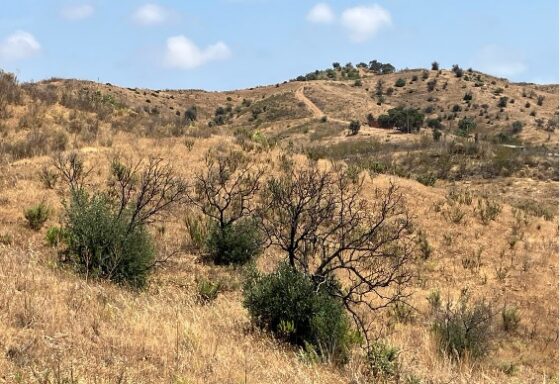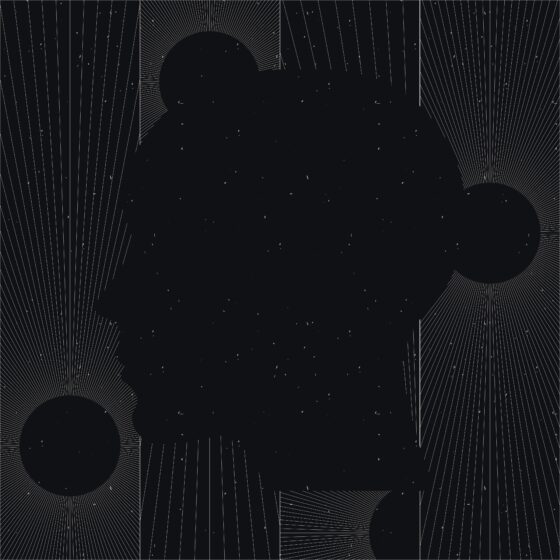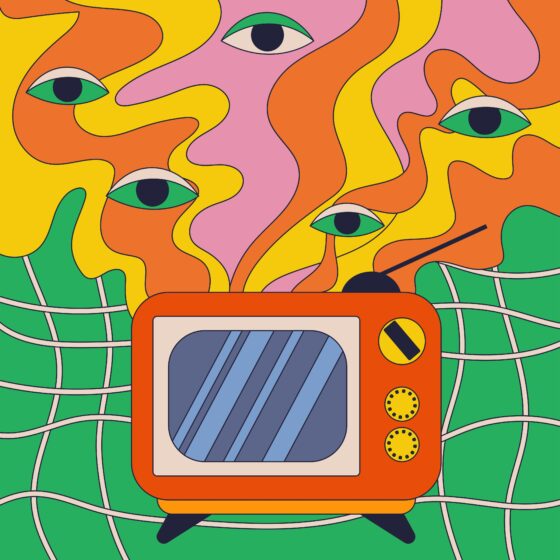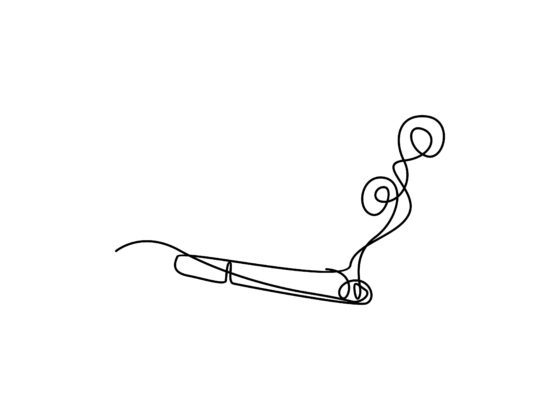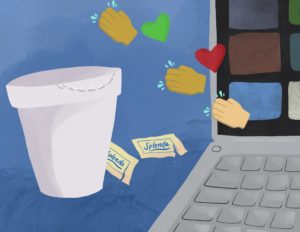
Part I.
February 2012, Knoxville, Tennessee
The first Alcoholics Anonymous meeting I attended was near the local university, where I had transferred to finish my college degree at the age of twenty-two. The meeting room was beige with matching metal chairs forming a wavy circle big enough to fit twenty people. I had just left a sixty-day stint at an in-patient treatment center, and following the firm suggestion from my exit plan, I found the meeting online: “New Beginnings, Mondays 6:30 p.m.”
Before entering the room, I waited in my car, nervously eyeing the door and the people who entered it. I embodied every recovery movie scene where the protagonist desperately wants to overcome their addiction and faces the crossroads of recovery or continued suffering. Except I wasn’t a beautiful white woman like Sandra Bullock in 28 Days, who looked incredible despite hitting rock bottom. Hesitating, I vacillated between going in and driving away. Finally, after checking my appearance repeatedly in the small rearview mirror, I took a deep breath and chose recovery.
The chair of the meeting, a Black man named Marcus, greeted me. “Have you been to AA before?” he asked as he lifted the metal grate that separated the industrial kitchen from the cafeteria. He placed powdered cream next to a giant vat of Sweet‘N Low, setting a row of Styrofoam cups next to it.
I shook my head no, pulling on my fingers to ease my rumbling anxiety. He gave me the spiel I’m sure hundreds of other people have heard: how hard the first meeting is and how much easier it will get. His voice was a soft echo beneath the sounds of an old round-faced clock that ticked above us.
I found my seat, pretending to look busy as people filed in. My Blackberry showed no new texts, so I grabbed a pamphlet and leafed through it like the A+ student I was trying to be, post-rock-bottom, post-rehab. I noticed the people taking seats in quick glimpses: a frat bro who wore his hat backward, a twenty-something woman in a denim skirt and flip flops, a man in his thirties in a short-sleeved button-down. Except for Marcus and me, everyone was white.
People said they were alcoholics and introduced themselves by their first names as they took turns reading the steps from long strips of glossy, laminated paper. They shared how many sober days they had, the last time they had fucked up, how hard step number three was for them, or how hard it was to stop drinking.
I bit into the soft Styrofoam cup, feeling jittery. It was hardwired, this nervousness before speaking, a habit I had acquired under the steel gaze of my mother and then my teachers. They always demanded a correct answer, one I never had, whether two-, seven- or fifteen-years-old.
“I’m Jen, and I’m an alcoholic,” I blurted out in one long exhale when I found a momentary opening.
“Hi, Jen,” they said in unison.
I blushed, searching for words. “Hi. I’ve been sober for one month, but I had two months sober before that, but those two months were spent in treatment, trying to get better . . . and it worked, I think. But a few weeks after I got out, I had a drink . . . I haven’t had one since, though . . . and things feel all right. It feels weird not to drink every night, but I’m doing it . . . and . . . well, I guess I’m glad to be here.”
“Glad you came,” they all sang on cue.
After my share, I felt release, like a pressure cooker slowly letting out its steam. My bloated insides returned to their standard shape while my thumping heart slowed to a steady rhythm. I resumed listening.
I loved 12-step meetings, the immediate vulnerability that existed with strangers about whom I knew nothing. I shared my most profound and darkest truths, things that 99% of the people who knew me would never hear nor understand. And yet I struggled, in that meeting and others, to relay how alcohol and food were both problems for me.
My addiction was threefold: bulimia, alcoholism, and drug use. In addition, I suffered from dysmorphia, perfectionism, and a lack of self-compassion. I had a dual diagnosis, meaning that I was doubly-afflicted. I had always found myself teetering on the fringes of Alcoholics Anonymous and Narcotics Anonymous. When people shared about how they couldn’t wait to get their next fix and how they had stolen money to do so, I thought about the times I had stolen food from bodegas to have something to throw up. I thought about the countless lies I had fed my parents and friends about lengthy disappearances before, during, and after meals.
The hardwired need, the uncontrollable craving people described, manifested for me primarily with my bulimia. Alcohol played second string in the quartet.
But it wasn’t as simple as that, even.
***
My origin story begins like this: A girl grows up in Tennessee with immigrant parents. A Korean girl grows up among white, middle-class children in schools where Bibles—and the opposites of good and bad, pure and evil—are referenced as often as one says “ma’am” and “sir.” A daughter grows up with a mother who suffers, whose pain comes out in yelling, controlling, withholding, beating, and criticizing. A wounded child grows up to understand she is not enough, that she will never be enough. This is what her mother’s trauma teaches her; this is what whiteness reinforces.
My first AA meeting lasted for an hour. I nodded and mmhmm-ed as I listened to people share, their voices shaky, proud, sad, or firm. At the end of the meeting, we stood up and held hands to recite the Serenity Prayer: God, grant me the serenity to accept the things I cannot change, the courage to change the things I can, and the wisdom to know the difference.
When I was young, I thought everything could be fixed. With the rise of plastic surgery in the nineties, I understood that I could cut fat here and shave my nose there to become beautiful. But I came up against a barrier that was larger than me, something I couldn’t necessarily change: my Asian face.
So, I sought to change the things I could.
At the beginning of my sophomore year of high school, I committed to losing ten pounds for spring break. That arbitrary number was my guiding light, and it dictated how many calories I ate and how many hours I fasted. Spring break wasn’t the raison d’etre of my eating disorder, but events like these—ones that had meaning like the winter dance where I wanted to impress everyone—presented a challenge I could use to measure success. And hitting the mark began to morph into a measure of my worth.
I revealed my bikini-ready body in the brisk, palm tree-filled sunshine when spring break rolled around. My hips jutted out like sharp, chiseled rocks, and my waist had shrunken to the tiny stem of an hourglass curve. “Your bikini top is so small,” my friend exclaimed. I stared at the top that nestled my little pellets of breasts, the black fabric like two rectangular islands connected by a ring in the middle. The thrill of victory wafted through me as I detected a hint of jealousy. She wants to be a size XS like me, I thought. I admired my chest bones glistening in the sunlight and wondered if my skin would tan faster without the fat. I had read about that in a Xanga blog for aspiring anorexics.
That evening, we gathered around mirrors to smother our flushed skin and highlight our budding tans with shimmering bronzer. We swapped clothes, a billowing array of blue and white stripes, floral halter tops, and hot pink bras bouncing through the space. Another high coursed through me as I perceived myself as more petite than my friends and saw how poorly my clothing fit them.
As the hum of cicadas emerged underneath an orange, dusky sky, we found dinner at a local restaurant where pink, plastic crab legs hung from the rafters and flimsy bibs were as expected and useful as forks. Poring over the menu, my mouth began to water at the images of meaty crab cakes, steamed crab legs, and crispy fried shrimp.
My bulimia had overtaken my dieting efforts, and eating had become a gluttonous task that exceeded taste and satiation. If I were going to eat, I couldn’t eat a single serving. It had to be five to make the purging worth it. I was confronted with the daunting task ahead of me: begin the cycle of eating in which I would need to find a solution to rid myself of the food or abstain altogether and gather all my resolve to eat the bare minimum, white-knuckling it until later in the night when the smooth waves of liquor would absolve me of my cravings.
With a long night ahead of me, I chose the latter.
I chose.
I felt like I had choices in my addiction, but it was choosing between bad and worse. The moments I fought to break the surface to gulp and sputter at clean air left me in even worse shape because what I had mistaken for pure oxygen was a toxic mixture of gasoline and fumes.
I ate a salad that night. A house salad with rubbery eggs that had been boiled for too long and imitation bacon that was chalky and brittle. I congratulated myself for picking the lesser of two evils and believed that the night had been salvaged.
After dinner, we climbed into my friend’s SUV. Black leather seats squeaked beneath our bare thighs as we rolled down the windows and breathed in the thin air, the heat having been wrung out as the sun said its farewells over the horizon. The pint of vodka that I had scored earlier at a liquor store vibrated in my bag like some stolen artifact whose ancestors were howling for it back. The urge flattened me like roadkill, leaving me with a single train of thought: Let’s get wasted. I cracked the red top, feeling the tiny plastic arms break free under my determined twist. “But we’re driving,” my responsible friend said. “You’re driving,” I replied before tipping the hooked plastic lip to my mouth. It burned going down, eviscerating the wants of my eating disorder, the voices that were telling me I needed to fill my body with anything and everything.
My addiction felt like a series of levers. My eating disorder would heighten, silencing the need for a drink or drugs. But when I unleashed the steady flow of booze into my body, the food cravings stopped. My stomach absorbed the alcohol quickly, having minimal carbs to soak up the excess. In a matter of minutes, I was shit-faced.
Before my friends could finish their third beers that night, I took my underwear off in a hot tub and made out with a boy I would not have made out with under sober circumstances. My wet, lacy thong twirled around his finger like a trophy. It was only in looking through pictures on our digital cameras the morning after that I noticed—with a shudder—his slack, pale jaw, a drooping glaze in his eyes that matched my own.
***
When the meeting officially ended and people refilled their cups of coffee or milled about to socialize, I asked Marcus if he would be my sponsor. Surprised, he took a step back, and remorse washed over his face. “I can’t,” he said, “your sponsor has to be a woman.” I later learned this was suggested to protect newcomers and stifle heterosexual romantic relationships because early recovery is when we are most vulnerable.
I looked away in embarrassment, feeling like a glowing red NEWBIE sign was stamped on my forehead. I thanked him for everything, and his eyes crinkled. “I hope to see you again,” he said.
Just moments before, we had huddled together in an intimate circle and chanted: Keep coming back; it works if you work it.
I got into my car, and the urge pulled at me. My thoughts drifted to a single focus, like a strong current pulling me out to sea. The fast-food restaurant wasn’t far; I didn’t have shit to do tonight, and what else did I have to lose?
The Serenity Prayer flashed in my head. Accept the things I cannot change. Tonight, my bulimia was something I couldn’t change. Tonight, I had no choice but to give in.
Part II.
February 2022, Portland, Oregon
“And tonight, we have Jen, who will be chairing the meeting,” the AA Secretary introduced me.
Twelve squares stared back at me on Zoom, mainly names and photos, but a few moving faces clapped and waved. I had only been to two AA meetings in the past five years, only upon a friend’s invitation. This meeting was exclusively for people of color, and although I wasn’t struggling with my sobriety, it never hurt to connect with others in a shared experience. With my ten-year mark, my friend had suggested I chair this meeting to show others, newcomers, that milestones and long-term recovery are possible.
It was strange being at an AA meeting almost ten years after my first. I believe in spirals; there’s no coincidence that we end up in similar situations at different times in our lives. In February 2022, I hadn’t had a drink or ingested any recreational drugs in ten years. Six months after my first AA meeting in 2012, I finally exorcised the bulimia from my body, an act that both surprised me and left me fearful of the moment it would come back as if it were a nasty case of ringworm I had just cleared. But it never returned.
I had come so far in my journey, traversing up rugged hills, lush valleys, parched deserts, and rain-soaked forests. “It doesn’t get easier, healing. I mean, it does, and it doesn’t,” I said into my laptop.
Two years ago, I met my first Korean American therapist. She was my second therapist of color and the first therapist who understood the cultural and societal implications I faced as an Asian American in the tension that was American Black and white. She understood what it was like being trapped within the web of white capitalist supremacy.
In one of our first sessions, she asked, “Have you heard of the Serenity Prayer?” I nodded, surprised to hear the prayer mentioned outside of a 12-step meeting.
“It’s about knowing what’s in and out of our control,” she said.
“Totally. And how little control we have over our addiction. Like, I felt so out of control, even though I knew I had the power to control my actions,” I responded.
“And what about today? Where is your control landing today?”
I regarded her and then the artwork behind her: rice paper woven in an intricate web with depth and energy but no movement. I didn’t realize it then, but angry and hurt, I had continued to feel trapped and abandoned. Even after my alcoholism and bulimia ceased, I had held onto resentment, collecting all the ways white people and systems had harmed me to continue feeding the fire I believed I needed to seek justice. Even though I was in recovery, the ways I doubted myself played like a needle stuck on a record, relentless and critical, the same way the obsession had when my addiction was at its worst.
***
“Even though I’ve been in recovery for ten years, I’m learning that there is a bottomless well of healing available. Just this year, I realized how much my anger has served me and how it also harms me. I learned how to use anger to protect myself against my mother when I was young. My anger could match her own, and we’d spit fire at each other until our throats were raw and weeping. She gave me the silent treatment, and I did the same, locking my door to save myself from her. That survival mechanism has stayed with me today, pushing loved ones away, and creating further turmoil that hurts me most. My anger has overstayed its welcome, and I am learning how to release it and create new pathways for love and compassion.”
I watched a few heads nod. Dealing with my anger wasn’t the only battle I had fought. Self-hatred also plagued me; self-loathing created body dysmorphia, which pinched my stomach rolls and hip fat, stared too long and hard in the mirror and whispered that double chins were signs of gluttony. My battles all revolved around the core tenant of self-love. Love could douse the fire of anger and melt the ice of self-hatred.
My therapist worked from a framework of compassion. How do we lend compassion to ourselves as a means of healing?
I didn’t see my judgment and accompanying anger until she pointed it out.
“She’s so loud and obnoxious and rude. What gives her the right?” I looked at my therapist expectantly, waiting for her to validate me, to affirm how this white woman had acted like a white man, diminished my presence, questioned my knowledge, and dismissed me altogether.
“Jen, what’s in your control?” she asked.
Scenes paraded through my head of me slamming this white woman’s head against a desk, slandering her name on social media by calling her a white supremacist, and following her home after work to thrash her mailbox. By the end of my vengeance dream, the white woman had turned into my mother.
Breathe. Quiet, dragon. No one is out to get you.
It would take me a year to learn this, but what was in my control was my response to other people’s actions. I would learn that I could control my thoughts, feelings, and actions and that other people’s thoughts, feelings, and actions were not mine to worry about. With this new frame of mind, I would see the narrative I had built to cope, the fortress that told me everyone was always out to get me, that it was always personal. I would realize that safety wasn’t about controlling the events around me but about building an inner world for myself that could hold, nurture, and care for me in times of duress. I would learn Bruce Lee’s mantra, Be like water, and would repeat this in my head, imagining everything rolling over and past me, simply, easily, quickly.
To not get stuck was healing.
To not get stuck is the antithesis of addiction. Being stuck is why we cannot find a way out in the first place.
I stumbled through that AA meeting, unsure of what to do or say next. After giving my ten-minute share, I ended with a prompt: How does anger show up for you in your addiction and/or recovery? An awkward moment of silence ensued, and I meekly asked the secretary if I should call on someone. She unmuted herself, and the virtual room erupted in claps and heart emojis. Shares began and were passed along to people. When the silence between speakers occurred, I squirmed, wondering how much facilitation I should be doing. And then, at the end, I was asked to lead the group in the Serenity Prayer, and I breathed a sigh of relief that I knew this, that I had been saying it daily for the past year.
A younger version of myself would’ve berated my performance: What a stupid prompt. Why didn’t you check to see what the flow would be beforehand? Why did you agree to do this in the first place? These were the voices of my judgment and self-hatred, but most of all, my pain. Instead of receiving this steady flow of black tar, I opened my heart to compassion for myself. I didn’t think twice about how I handled the AA meeting; instead, I held onto the moment of love I had felt in that virtual space and the beauty of being held and holding others.
After the meeting, I closed my laptop and followed the scent of spicy turmeric and fried garlic into the kitchen. Hunger emerged on the coattails of my gratitude and joy, and my stomach grumbled. “Right on time!” my partner said as he flipped a chicken breast in a cast-iron skillet. I smiled, took a deep breath, and set the table, using the oddly shaped and handmade ceramic plates he’d made last year, my favorites. They didn’t match, nor did the utensils, just like no two choices and moments are ever the same. I swapped one fork for the other, placing the smaller one at the seat I preferred, in the corner where I could simultaneously look out the window and at my partner as we shared a meal. A reminder that I had choices, no matter how small they seemed.
***
Rumpus original art by Madeline Kreider Carlson
***
Voices on Addiction is a column devoted to true personal narratives of addiction, curated by Kelly Thompson, and authored by the spectrum of individuals affected by this illness. Through these essays, interviews, and book reviews we hope—in the words of Rebecca Solnit—to break the story by breaking the status quo of addiction: the shame, stigma, and hopelessness, and the lies and myths that surround it. Sisters, brothers, mothers, fathers, adult children, extended family members, spouses, friends, employers or employees, boyfriends, girlfriends, neighbors, victims of crimes, and those who’ve committed crimes as addicts, and the personnel who often serve them, nurses, doctors, social workers, therapists, prison guards, police officers, policy makers and, of course, addicts themselves: Voices on Addiction will feature your stories. Because the story of addiction impacts us all. It’s time we break it. Submit here.



